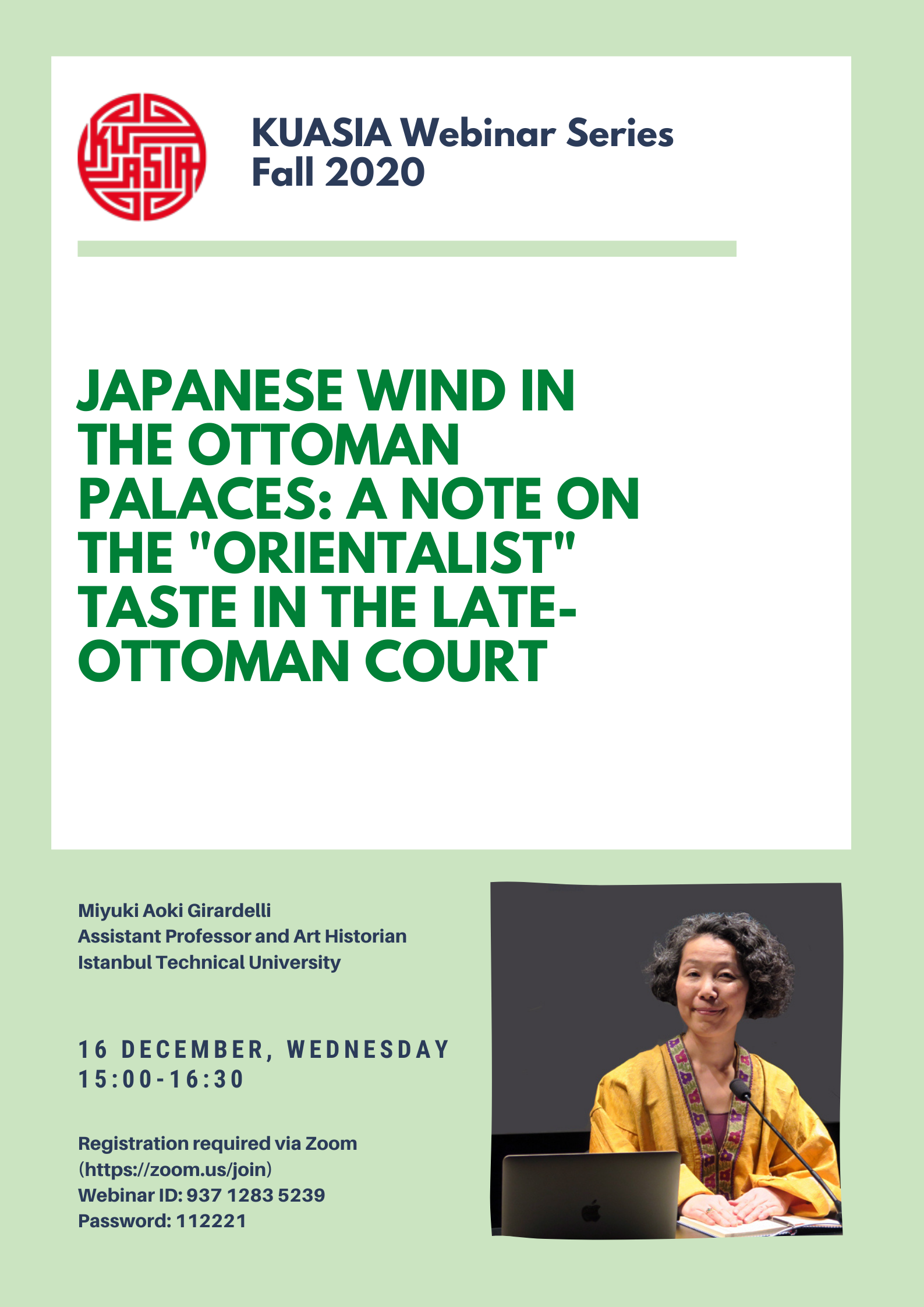KUASIA Fall 2020 Webinar Series – Japanese Wind in the Ottoman Palaces: A Note on the “Orientalist” Taste in the Late-Ottoman Court

Assistant Professor and Art Historian
Istanbul Technical University
Abstract
Starting from the 1860’s, the source of inspiration of the Ottoman Orientalist taste has been focused on so-called “Moorish” style, North African and Spanish Muslim elements as seen in the Pertevnyial Valide Sultan Camii (1872) and Çırağan Palace (1872), reflecting clearly the personal taste of Sultan Abdülaziz and the European fashion of the time. With the following Sultan Abdülhamid II a new trend began to emerge: Japonisme. Abdülhamid II is known to have sent a delegation to the Emperor Meiji of Japan, an initiative that ended with the famous tragedy of warship Ertuğrul in 1889. The lives of almost 90% of the 600 crew were lost because of a typhoon on the way back. Japanese objects currently preserved in the Milli Saraylar collection (Dolmabahçe Palace, Beylerbeyi Palace, Yıldız Şale, Ihlamur Kasrı, Küçüksu Kasrı, Yalova Atatürk Köşkü, Saray Koleksiyon Müzesi) were believed to have been brought as gifts with the survivors or purchased from the Japanese merchant Yamada Torajiro (1866-1857) who ran Nakamura Shōten (later Japon Oyuncak Mağazası) in Beyoğlu between 1892-1915. According to the researches in collaboration with Milli Saraylar Daire Başkanlığı (Department of National Palaces) since 2012, among almost 400 items supposed to be “Japanese”, many of them turned out to be made not in Japan, but in Europe with Japanese taste – obviously reflecting the taste of the period: Japonisme. Even the existence of some Yıldız porcelain in Japanese taste, showing a kind of “Ottoman Japonisme” were noticed during the research work. As for the objects clearly made in Japan, in turn, most of them do not fit into the classical Japanese standards of taste but were made especially for a foreign demand, for export. The lecture will elaborate on this rich intercultural phenomenon witnessed by the so-called “Japanese” objects of Milli Saraylar collection, fostering a re-consideration of some important aspects of the late-Ottoman court taste.